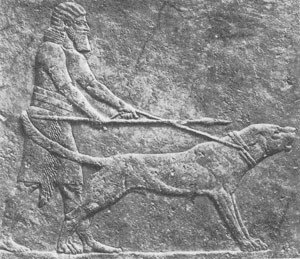This is Part II of a three part post.
Part I identifies the intent of the drafters in writing the First Amendment's Free Exercise of Religion clause and explains why the Obama HHS mandate is unconstitutional in consideration thereof.
This Part II deals with how the Supreme Court, and particularly Justice Scalia, have strayed from the original intent of the Free Exercise clause, but would still find the HHS Mandate unconstitutional.
Part III will deal with how the founders did not forsee or account for the rise of radical secularism, which is a religion unto itself, and how that impacts the Free Exercise clause.
-----------------------------------------
Part II Summary
Under current federal law (the Religious Freedom Restoration Act - RFRA), the federal government would stand next to no chance of winning in a suit brought over the Obama HHS mandate as applied to Catholic institutions. But RFRA - a Congressional power grab on the issue of Constitutional interpretation - is likely itself to be found unconstitutional as applied to the federal government.
If RFRA doesn't apply, then Justice Scalia's 1990 interpretation of the Free Exercise clause, one that severely circumscribes the scope of the clause, would mean that the Obama HHS mandate is lawful. But Scalia admits in his opinion that he wrote his bright line rule to cut off litigation from minor religions that have sprung up after the signing of our Constitution. Scalia, like Jefferson before him, implicitly assumes that the government would not encroach on core, mainstream religious beliefs extant at the time of the adoption of the Bill of Rights. Thus, a case brought today under the HHS mandate would most likely result in a complete reexamination of the original intent of the drafters in passing the Free Exercise of Religion clause. And if that happens, then the Court would likely find that the HHS mandate is unconstitutional.
-----------------------------------------
Part II Discussion:
The First Amendment to the Constitution provides, in relevant part, that "Congress shall make no law . . . prohibiting the free exercise" of religion. As explained in Part I, the original intent of the drafters of this provision, as identified in the 1878 case of Reynolds v. United States, was to keep government from legislating in the area of then extant mainstream religious beliefs, but to allow the government to legislate against acts done under the color of religion that threaten societal order and duties.
As the scope of government has grown over the past near two and a half centuries, and as both minor religious offshoots, such as Jehovah's Witnesses, have proliferated and as people have become inventive in trying to make use of the Free Exercise clause, the Supreme Court has done a significant number of Free Exercise cases. The Free Exercise clause was used to challenge everything from payment of income taxes, payment of SSI taxes, minimum wage laws, and the draft to name but a very few. Prior to 1990, the Court had developed "Sherbert" test for Free Exercise cases that it applied on an ad hoc basis. "Under the Sherbert test, governmental actions that substantially burden a religious practice must be justified by a compelling governmental interest."
That changed in 1990, when Justice Scalia authored the opinion in Employment Division, Dept. of H.R., Oregon v. Smith, a case involving native Americans who claimed the right to use peyote as part of their religious services. The plaintiff's argued that Sherbert should be applied to their case. Scalia, whose love of originalism exists in conflict with his love of bright line rules, held that the Sherbert test would henceforth be limited to employment compensation matters. His concern was that the Sherbert test, if generally applied, would produce "a private right to ignore generally applicable laws:" He as much as admits at the conclusion of his opinion that his goal was to cut off litigation arising out of claims outside the mainstream of religious beliefs, in essence assuming, as did Jefferson two centuries previously, that the Free Exercise clause would protect mainstream religious beliefs because government would never encroach upon them:
It may fairly be said that leaving accommodation to the political process will place at a relative disadvantage those religious practices that are not widely engaged in; but that unavoidable consequence of democratic government must be preferred to a system in which each conscience is a law unto itself or in which judges weigh the social importance of all laws against the centrality of all religious beliefs.
Ultimately, Scalia adopted the brightest line of all - that a case could not succeed solely on Free Exercise grounds unless the government act at issue was directed explicitly at religion. The problem with Scalia's solution is that it went too far - and his assumption was wrong. His reshaping of the law now allows the government, as Obama has done, to encroach on what Jefferson called "the rights of conscience" of mainstream religion that the Free Exercise clause was designed to protect. It disadvantages all ancient religious practices, not merely those that "are not widely engaged in."
Congress reacted, passing the Religious Freedom Restoration Act of 1993 (RFRA), 42 U.S.C. § 2000bb et seq. Under RFRA, laws interfering with free exercise of religion under would have to be supported by a compelling state interest and be the least restrictive of religious freedom as possible. The Supreme Court would later, in City of Boerne v. Flores, declare RFRA to be unconstitutional as applied to the states because it exceeded the bounds of Congressional authority. The decision was based on whether the Supreme Court or Congress has ultimate authority to interpret the Constitution. Yet because the Boerne Court did not address whether RFRA still stands as to federal law, it remains today as the law limiting federal government action. As NRO points out, the practical effect of the RFRA two prong test would be to make it next to impossible for the U.S. government to succeed in a case over the Obama HHS mandate.
So here's what all of this boils down to. In a case over whether the Obama HHS mandate can be lawfully applied to force Catholic institutions to fund contraception and the morning after abortion pill, the Court would have two major questions to answer. One, whether RFRA is unconstitutional as applied to the federal government. I think that likely. Which would then raise the second question, whether the bright line test in Smith applies in a situation where it is not minor religious practices that "are not widely engaged in" at issue, but the ancient, mainstream and core issue of Catholic beliefs as to contraception and sanctity of life. I cannot seeing the Court doing that, as it would mean truly gutting the Free Exercise clause.
And that last will cause some amazing linguistic contortions in the Court. For our nation, at its inception, was a Christian nation that made room for all within its ambit, subject only to restrictions that define the outer edges of what was acceptable to such a Christian nation. Indeed, that was the whole basis for the decision in the first Free Exercise case heard by the Supreme Court, Reynolds, which I addressed in Part I here. That is decidedly not politically correct to admit after six decades of radical left wing efforts to remove Christianity wholly from our laws and the public square. How the Court might modify Smith without admitting to all the rest would be interesting to see indeed.















































No comments:
Post a Comment